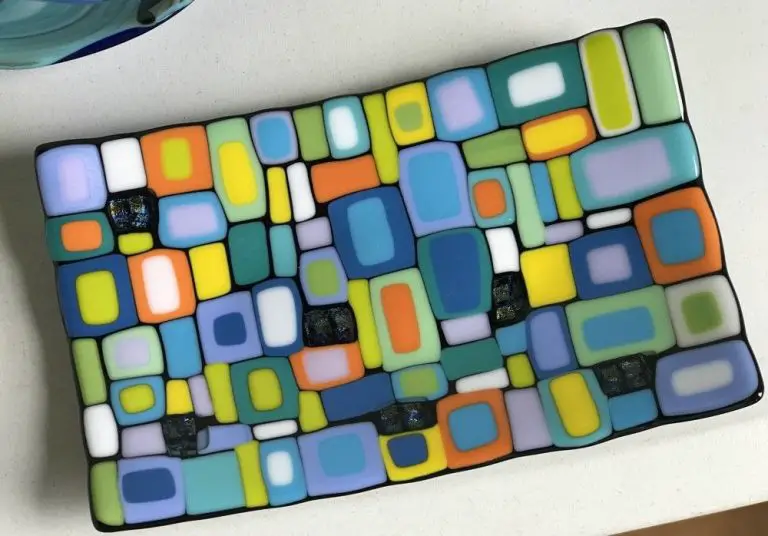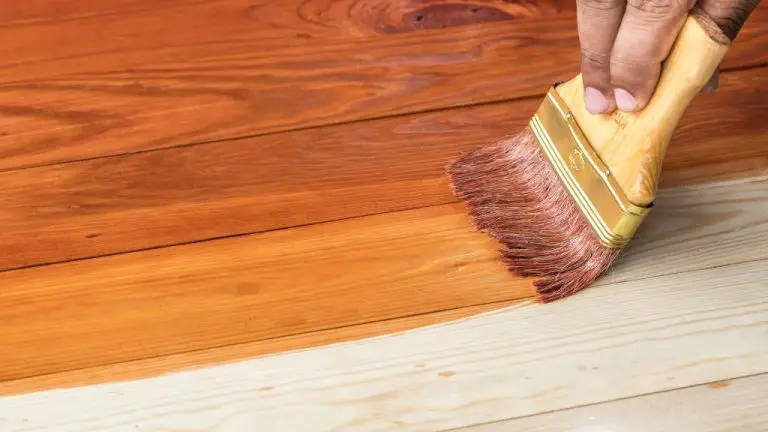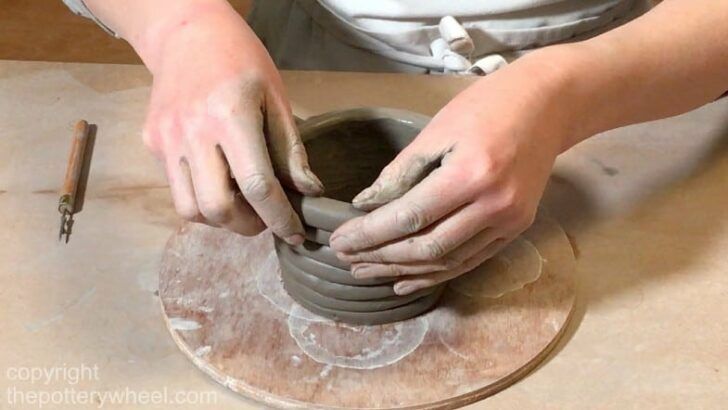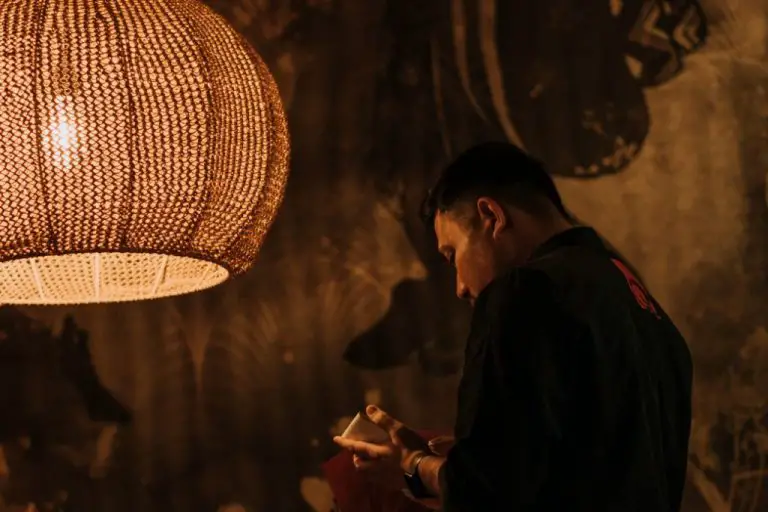Are Clay Cups Safe To Drink From?
Clay cups and mugs have been used for thousands of years in many cultures around the world. They were one of the earliest forms of pottery developed by ancient civilizations and remain popular today for their artisanal, handmade appeal. However, there are some safety concerns when using clay cups that have developed over time, especially regarding lead content and the potential for contamination. This article will provide a comprehensive overview of the history and manufacturing process of clay cups, while examining the key questions around their safety for regular use.
While clay cups can add rustic flare to any drink, their porous material also raises questions about possible leaching of chemicals, retention of bacteria, and other safety issues not found with glass or metal drinkware. As we will explore, with proper manufacturing and glazing techniques, clay can be made into safe, lead-free vessels. However, care must still be taken to monitor for possible contamination, especially with lower quality or handmade clay cups.
History of Clay Cups
The use of clay cups and pottery dates back thousands of years. According to Lakeside Pottery, the origins of clay pottery can be traced back over 20,000 years to prehistoric times when early humans began experimenting with clay. Archaeological evidence shows some of the earliest known clay vessels were made in China and Japan during the Neolithic period around 10,000 BCE.
Clay cups and pottery then emerged amongst early civilizations across the ancient world. Ancient Egyptians developed kilns for firing clay between 5000-3000 BCE, while ancient Greeks excelled at pottery and clay cup making from 6th century BCE onwards. Throughout history, clay cups have held cultural and traditional significance in many societies. They were ubiquitous for holding water and other drinks. Simple clay cups have symbolized purity and earthliness across religions and cultures, from ancient Hindu practices to Christian Last Supper imagery.
Types of Clay Used
There are several types of clay commonly used to make cups and other pottery items. Some of the main types include:
Terra Cotta: This natural clay has an orange-red color when fired. It is porous, durable, and chip-resistant. Terra cotta clays typically fire at lower temperatures around 1,800-2,000°F. Due to the clay’s permeability, terra cotta works well for planters and other items meant to breathe.[1]
Stoneware: This is a strong, vitreous clay that becomes non-porous when fired around 2,200-2,400°F. It comes in various natural colors like tan, grey, and buff. Glazes are often applied to stoneware to create a decorative, waterproof finish. The durability of stoneware makes it popular for tableware like mugs and plates.[2]
Porcelain: Porcelain clays fire at very high temperatures over 2,400°F. The result is a smooth, white, translucent ceramic that is non-porous and chip-resistant. Porcelain is commonly used for cups, mugs, bowls and other dinnerware due to its elegant appearance and durability. However, it is less thermal shock resistant than stoneware.
Red Clay: This iron-rich clay fires into a terracotta color. It has high plasticity, making it easy to handbuild and throw on the potter’s wheel. Red clay has average shrinkage and absorbs water easily. It fires at lower temperatures around 1,800-2,000°F to achieve permanent hardness.
[1] https://www.keeeps.co.uk/blogs/potters-block/pottery-for-beginners-the-4-main-types-of-clay
[2] https://thepotterywheel.com/types-of-clay-for-pottery/
Manufacturing Process
Clay cups are traditionally shaped by hand on a potter’s wheel or molded into shape without the use of a wheel. The clay is wedged and kneaded to remove air bubbles and ensure uniform consistency before being shaped. Once formed into the desired cup shape, the clay is left to air dry until it becomes leather hard.
The dried clay cup must then be fired in a kiln to harden it fully. Firing temperature varies based on the clay type, but can range from 1800°F to 2300°F. The cups are loaded into the kiln and fired for hours, sometimes employing a process called reduction firing which removes oxygen and turns the clay black. This helps make the clay denser and less porous.
Historically, wood-burning kilns were used for firing clay cups and ceramics. Modern gas and electric kilns allow for more precise control over firing temperature. Firing times also depend on factors like clay thickness. Overall, proper firing is essential to create durable, non-porous cup material.
For a visual demonstration of traditional hand-forming and firing techniques still used today, see this video: https://rumble.com/c/c-5333021?date=this-year&page=3
Lead Content
There is some concern that lead from the clay, glaze, or paint on ceramic cups can leach into liquids, especially acidic drinks like coffee or fruit juices. According to the FDA, lead can leach into food under certain conditions, including the pH of the food, temperature, and how long the food is in contact with the ceramics [1]. Research has found higher lead levels leaching from ceramic cups and pots than from plates [2].
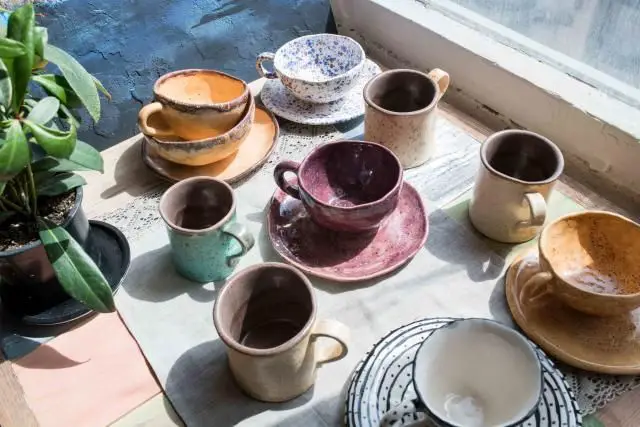
The FDA has set limits on acceptable amounts of leachable lead in ceramicware, but not all manufacturers follow these guidelines. Consumers can purchase lead testing kits to check for the presence of lead in ceramics they already own. Anything testing over 0.5 ppm would be considered unsafe for food use according to California’s Proposition 65 [2].
Other Chemical Concerns
When it comes to clay drinkware, other chemicals beyond lead may be a concern, especially cadmium and arsenic. Studies have shown that these chemicals can leach out of the clay material over time.
One study published in the journal Food and Chemical Toxicology found that arsenic leached up to 10 times more from unglazed clay cookware compared to other materials (Source). The researchers concluded that repeated use of unglazed clay pots for cooking acidic foods may result in very high exposures of arsenic.
Another study in the Journal of Environmental Health showed that cadmium and other heavy metals can leach from the glazed surfaces of clay drinkware after repeated use (Source). The researchers found concerning levels of cadmium and lead being released into hot beverages, demonstrating that clay can release its chemical components over time.
The porosity and composition of clay makes it susceptible to leaching toxic chemicals into food and drink. Proper glazing and firing techniques during manufacturing may reduce, but not eliminate, this risk of contamination.
Risks of Contamination
There are several risks of contamination to be aware of with clay cups and pottery:
Improper firing and glazing can leave behind dangerous levels of lead in the clay. Lead glazes were commonly used in the past, and some modern glazes also contain lead. Firing at temperatures too low to properly seal glazes allows lead to leach into food and drinks (Health Department Warns New Yorkers About Clay Pottery Containing High Lead Levels).
Clay that is improperly purified or cleaned can contain heavy metals like arsenic and cadmium, even without glazes. Trace levels may remain in the clay body. Cracked, scratched, or damaged glazes also provide a direct path for contaminants to leach out of the clay.
Acids from foods and drinks can react with the clay material, slowly dissolving compounds like lead and cadmium into the food. Tomato sauce, fruit juices, vinegars, wines, and coffee are particularly concerning. The longer the contact time, the greater the risk of leaching toxins from improperly fired or tainted clay.
Chips, cracks, crazing, and scratches in the glaze provide a direct path for contaminants to make contact with food and drink. Damaged or worn clay cups and plates should not be used, especially for wet foods and liquids which hasten leaching.
Safety Tips for Use
To safely use clay cups and avoid potential contamination, follow these tips:
Always wash your hands thoroughly before handling or drinking from clay cups, according to the Ceramic School. Clay can contain bacteria and contaminants from the manufacturing process, so handwashing helps remove any residue.
Inspect cups carefully before use and avoid old or damaged ones, advises Reddit users. Cracks, chips or scratches in the glaze can allow liquids to penetrate the clay body and leach out contaminants. Acrylic-coated low-fire clay is also not food-safe. For optimal safety, use high-fire kiln-fired clay cups in good condition.
Clay vs. Other Materials
Clay cups have some advantages and disadvantages compared to cups made from other common materials like glass, plastic, and metal.
Glass
Glass is non-porous and impermeable, so it does not absorb flavors or odors. Glass cups can be cleaned easily and do not require special care. However, glass breaks easily if dropped and can have issues with thermal shock from hot liquids 1.
Plastic
Plastic cups are inexpensive, lightweight, and durable. However, lower quality plastic can leach chemicals into hot liquids. Plastics also degrade over time and scratch easier than materials like glass or glazed ceramics 2.
Metal
Stainless steel and aluminum cups conduct heat well. However, metal can impart a metallic taste to some liquids. Enameled metal cups avoid this issue but can chip over time. Metal cups are also prone to denting 1.
Clay cups can provide excellent heat retention while avoiding some of the drawbacks of the other materials. However, they require more care to avoid cracking or crazing of the glaze.
The Bottom Line on Clay Cup Safety
While clay cups can be safe if properly made and fired, there are some risks to be aware of. Lead and other heavy metal leaching are the main safety concerns, especially with low-fired earthenware clay. Lead-free glazes and high-firing temperatures help minimize leaching risks. Additionally, avoid putting extremely hot or acidic liquids in clay cups, don’t use chipped or cracked cups, and don’t reuse disposable clay cups.
For most purposes, high-fired stoneware or porcelain clay cups are likely safe for normal drinking use. Low-fired earthenware or terra cotta cups may be safe for short-term use if lead-free and made by a reputable source. Extended use or reuse of these types of cups does pose more risk. Disposable terra cotta cups should not be reused. Any clay cup should be inspected before each use.
In summary, clay cups are generally considered safe for drinking, but care should be taken to choose high-fired lead-free cups from reputable makers. Proper use and inspection will also minimize risks when using clay cups.

